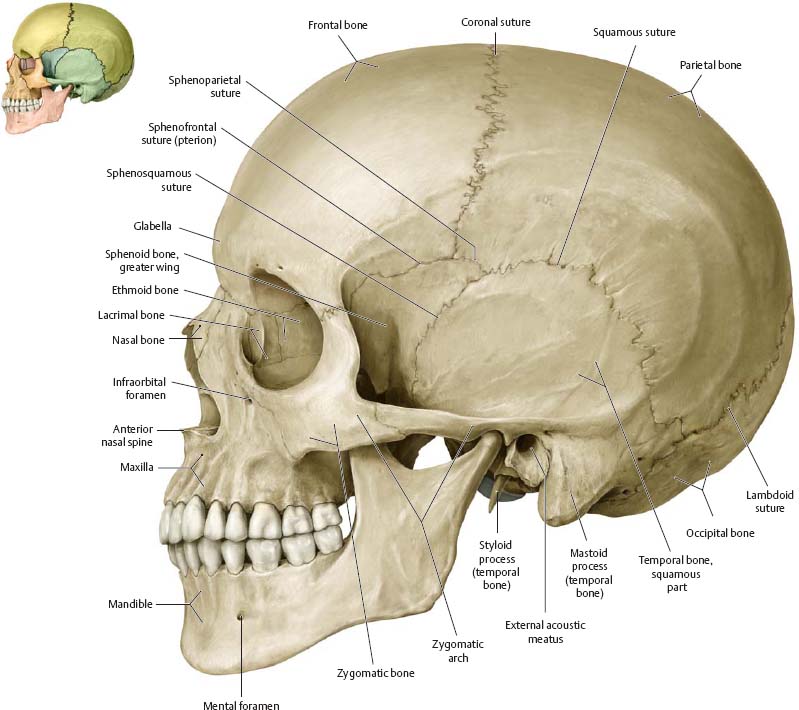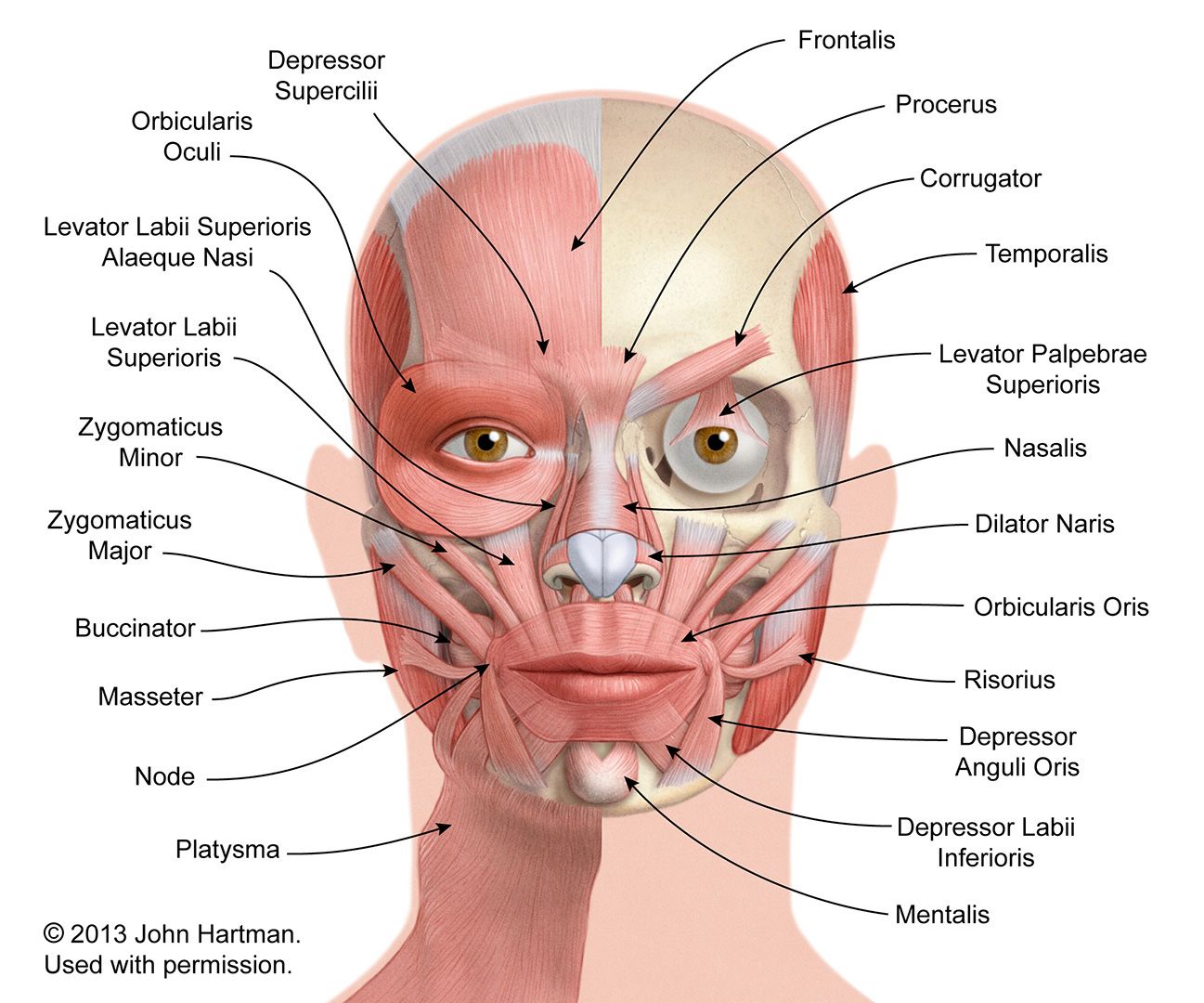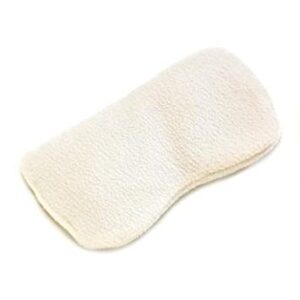Anatomy of the Face and Head
The head, particularly the face, is probably the single body region that most determines how we respond to the world around us, and because of our society's emphasis on looks, the way in which others respond to us.
The face and head contain the sense organs, the structures which carry messages of light, sound, taste and of course smell, to the brain. We rely on the massive amount of sensory information brought into the brain to give us most of our knowledge of the environment in which we live, and we also rely on the densely concentrated immune system structures in this area to protect us against threats from the environment.
These immune structure, such as the lymph nodes, tonsils and adenoids, are located around the face, head and neck. They are important in isolating and destroying any harmful organisms which might enter through the openings of the eyes, ears, nose and mouth. When infection is present, the lymph nodes become swollen and tender as they produce large numbers of white blood cells to fight the invaders. Important clusters of nodes are found at the base of the skull, in front of the ears, under the jaw and running down the throat.
Head Bones
There are 22 bones forming the skull and face - eight bones make up the cranium, the bony box-like structure containing the brain, and the remaining 14 form the framework of the face. The bones of the skull are tightly jointed together by immovable joints known as sutures, but there are air spaces - or sinuses- in some of the bones to make them less heavy. These spaces can become congested and infected leading to sinusitis.

The only movable joint in the face is the temporomandibular joint, or TMJ, which allows the lower jaw to carry out the movements for chewing and speaking.
Expressing Yourself

There are over 30 muscles in the face alone, enabling us to make a wide range of expressions to show - or sometimes hide - our emotions. Interestingly, it takes twice as many muscles to frown than to smile. Facial muscles are attached to the skin, so even a small muscles movement can cause significant changes in expression.
As humans we become expert in gathering a great deal of information about the people around us from these tiny movements, learning this skill from earliest infancy.
The Face and Head
Facial muscles are extremely mobile, and although it is rare for stress to cause facial pain, it does tend to etch the habitual expressions of tension on the face, making a chronically stressed person look tired and older. The brain responds to muscular tension anywhere in the body, including the face, by declaring a state of emergency which then reinforces that tension. With the face, however, it may be possible to break this vicious circle - studies have shown that smiling, even if the smile is purely a mechanical grimace without emotion, will actually cause chemical changes in the body and brain consistent with feelings of happiness and wellbeing. We can fool our brains into making us feel better.
The eye area is particularly vulnerable to muscular stress, both in the external eye muscles, which may become lined and wrinkle, and in the internal muscles that shorten or lengthen to help the eye focus. This may lead to eye strain and headaches.
Misalignment of the jaw can cause TMS - temporomandibular syndrome - which is characterised by facial and neck pain, headaches, and sometimes vertigo and nausea. TMS can be caused by dental work, but is more frequently due to stress-related teeth grinding or muscular tension. Craniosacral therapy, where the joints of the skull are gently freed, can be helpful.
Tightness in the muscles around the base of the skull can precipitate tension headaches, which are characterised by severe pain, usually on one side of the head and over one eye. Muscle tension may also interfere with the flow of blood to the scalp, which can be another cause of headaches. Migraines, which can be crippling with severe pain, nausea and sometimes visual disturbance, may be caused by bright lights, weather conditions, perfumes and certain foods - but altered blood supply to the brain is a major factor. Stress and tension are both known to interfere with the blood circulation.
Essential Oils for the Face and Head
Take care with your choice of oils and the strength of blends used on the delicate facial skin. Oils should never go in the eyes or ears. Nausea associated with some headaches can make sufferers hypersensitive to smells. Often lighter aromas, e.g. lavender and peppermint, are preferred, as are warmer smells of roman chamomile and sweet marjoram. Or try ginger for the nausea. Consult your GP if headaches are persistent or unusual.
Massage
Any form of scalp, head or face massage is a great stressbuster. Focus on the jaw area too, where we tend to clench our teeth.
Compresses
A warm compress at the base of the skull, at first sign of a migraine or headache, can stop it developing. Or use a cool compress on the forehead if established.
Inhalation
Steam inhalation can relieve sinusitis and a favourite oil inhaled from a tissue or bottle may prevent headaches.
